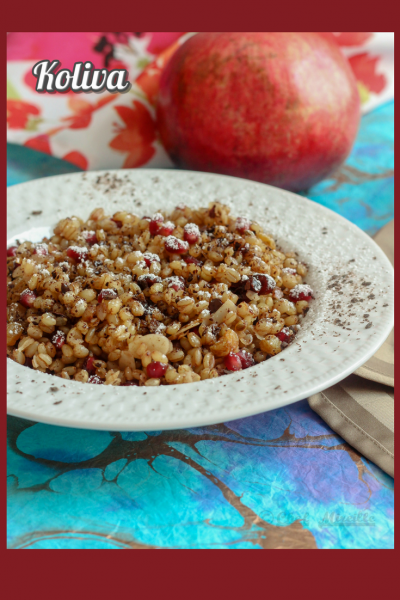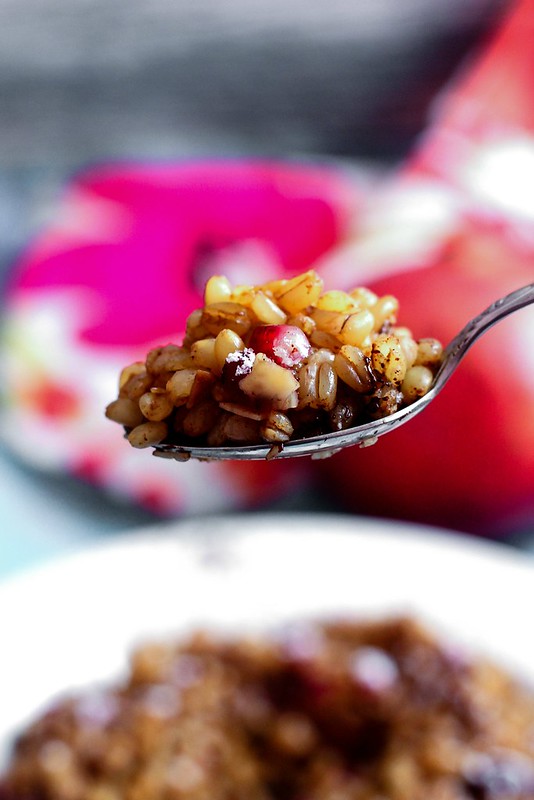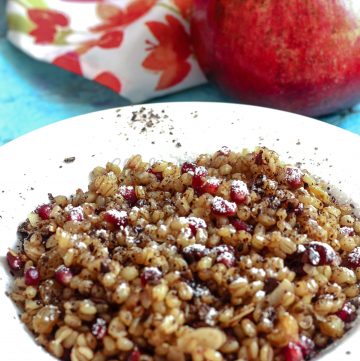Last Updated on November 13, 2019 by Chef Mireille
 Koliva – a whole grain European dessert from Romania, Serbia, Bulgaria and Greece. Perfect for a #vegan Easter treat!
Koliva – a whole grain European dessert from Romania, Serbia, Bulgaria and Greece. Perfect for a #vegan Easter treat!
Koliva is a traditional dish of the Christian Orthodox Chuch of Eastern Europe, specifically eaten in the countries of Romania, Serbia and Bulgaria. It is usually served at Christmas and also on the first day of Lent. Additionally, it is eaten at funeral services and blessed at Divine Liturgy memorial services, performed at different intervals after a death. This dish is also made in Greece, but does not have the religious attachments in Greece and can be served at any occasion there.
The history of this dish in Greece dates back before the Christian Orthodox Church to the times of Greek mythology. The wheat symbolizes Demeter, the earth goddess, while the pomegranate seeds represent her daughter Persephone, queen of the underworld. Almonds were sacred to Aphrodite and raisins to Dionysis. Sesame seeds were said to open the doors of consciousness. (source: Wikipedia)
While enjoying this wholesome dish, you could also teach your kids about Greek mythology at the same time!
Before we get to this great snack, let’s take a look at some other wheat berry treats!
Wheat Berry Recipes
Want to see how this delicious recipe comes together in action – Check out the video here!
This is a very customizable dish. Other ingredients often included are ground walnuts, parsley and other dried fruit.
Koliva – a whole grain European dessert makes a great #kidfriendly after school snack
Koliva – a whole grain European dessert
Ingredients
- 1 cup wheat berries
- 1/2 cup pomegranate seeds
- 2 tablespoons dried cranberries
- 2 tablespoons raisins
- 1/4 cup toasted slivered almonds
- 1/4 teaspoon anise seeds
- 1 teaspoon sesame seeds
- a pinch of salt
- 1 teaspoon ground cinnamon
- 1/4 cup sugar
- powdered sugar for garnish
- chocolate or candy for garnish
Instructions
- Boil wheat berries in a large pot of water until tender, about 30 minutes. Drain.
- Add all other ingredients, except garnish ingredients. Stir to combine.
- Garnish with powdered sugar and chocolate or candy.
Notes
In Romania, it is garnished with cocoa, chocolate or candy. However, this garnish does not occur in the Greek version.







Food connect us with the Gods!! Love that history behind this beautiful dessert Mir!! Looks very interesting, i bet it must taste yumm with all that nutty garnishes!!!
thanks – yes it was so interesting to learn the history
Loved reading about the history behind this wonderful tempting and so different dessert dish. Beautiful clicks too Mireille.
thanks – yes I too find the history quite interesting